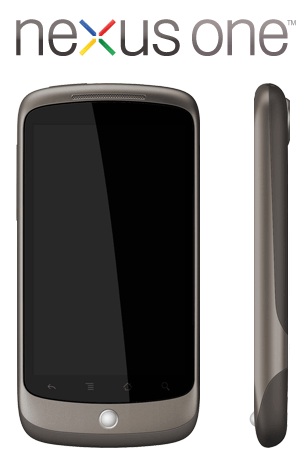 Many Nexus One owners who didn’t read the fine print of their contract with Google and T-Mobile when they purchased their Nexus One were shocked to find that the early termination fee (ETF) if they decided to cancel their account was $550 combined between fees charged by Google and T-Mobile. The huge ETF didn’t set well with many and to help entice users to upgrade despite hefty fees if they didn’t like the handset, Google cut the upgrade price of the Nexus One in January by $100.
Many Nexus One owners who didn’t read the fine print of their contract with Google and T-Mobile when they purchased their Nexus One were shocked to find that the early termination fee (ETF) if they decided to cancel their account was $550 combined between fees charged by Google and T-Mobile. The huge ETF didn’t set well with many and to help entice users to upgrade despite hefty fees if they didn’t like the handset, Google cut the upgrade price of the Nexus One in January by $100.
Google caught flack for its very high ETFs from the public and in the press. The FCC also issued letters to Google and other wireless carriers with a request that the firms explain why they were charging such high ETFs and how they are making sure customers are aware of the fees if they don’t like the device or service.
ComputerWorld reports that Google has now quietly reduced its ETF on the Nexus One by $200 making the total ETF with Google and T-Mobile combined $350. That price matches the $350 ETF that Verizon charges its customers. The search giant didn’t publicize the reduced ETF and simply changed its terms of service to reflect the price change.
Google also added a line to its terms of service that users who upgraded an existing T-Mobile line to the Nexus One would only have to pay Google $50 for canceling early. Google maintains that it is making no profits on ETFs and that the charges simply mirror those of T-Mobile if a customer cancels early.
Google released a statement saying, “Google’s overall financial philosophy with regard to operator service plans remains unchanged: We make no profit from commissions from operators or from equipment recovery fees, and our recovery fees are based on operator charges to Google for early termination of service.”
Google has also launched a Nexus One phone support line reports CNET News. The new phone support line is intended to answer any questions that Nexus One owners might have about their devices. The number for the support line is 888-48NEXUS and it is answered between 4 a.m. and 7 p.m. PST.
A Google spokesperson said, “By design, we focused initially on providing the best possible customer support through our on-line channel, and our experience in the four weeks since the Nexus One launch enabled us to significantly enhance that on-line support offering. We have been able to address a large majority of customers’ inquiries successfully through on-line support, in combination with phone support from our partners, HTC and T-Mobile. That said, our approach with our new consumer channel is to learn fast and continue to improve…Live phone support from Google, combined with an optimized on-line support experience, enables a superior Nexus One customer experience.”